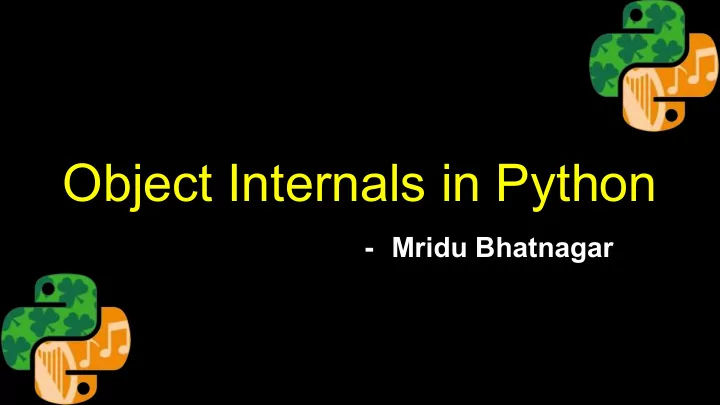

Object Internals in Python - Mridu Bhatnagar
Who am I? - Python Enthusiast - Backend Developer by profession. - I love speaking at various meetup groups and conferences. - Twitter handle - @Mridu__
- objects - memory address Learning - type of objects (mutable Objectives and immutable objects) - difference between is vs == operator - optimizations
An object is an entity that has attribute and methods associated with it.
Example:
The location where the object gets stored in memory is referred to as memory address.
Pictorial Representation
id(object) - id is a built-in function. It is used to determine the memory address of the object.
Mutable objects and Immutable objects.
Objects of built-in type (list, dictionary, sets) are mutable.
Objects of built-in type (int, float, bool, str, tuple) are immutable .
Difference between is vs == operator
Different use cases to discuss memory optimization in Python
1. Sort and Sorted built-in methods
2. Concept of Integer Caching
3. Concept of String Interning
As the Python code compiles identifiers are interned. - variable names - function names - class names Rule: * start with _ or a letter. * may contain _, letter, numbers.
4. Copying List using Assignment operator
5. Shallow Copy in Lists
The outermost container is duplicated, but the copy is filled with references to the same items held by the original container.
6. Deep Copy in Lists
Duplicates do not share references of embedded objects.
Why is it important to learn object internals?
* operator copies the memory references
- object internals - memory address use cases - type of objects (mutable, Summary immutable) - difference between is vs == operator - optimizations
Recommend
More recommend